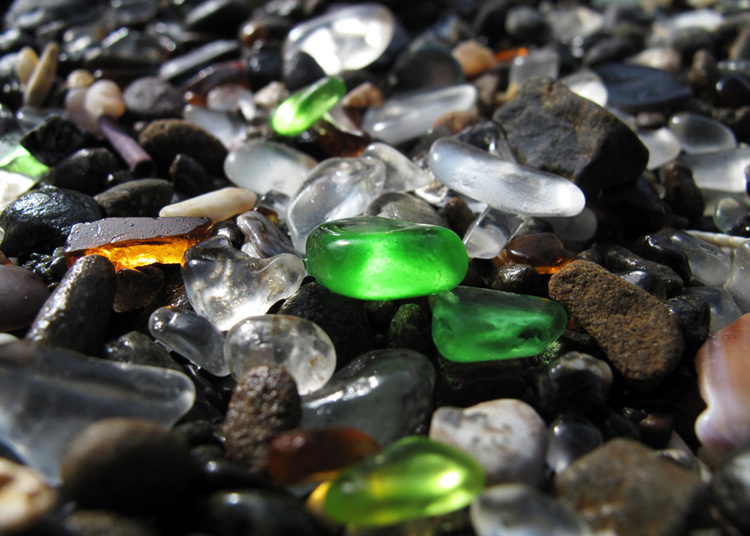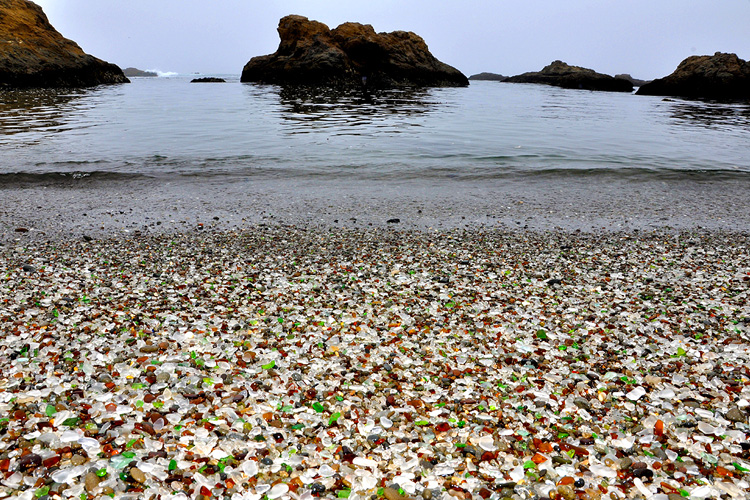The name says it all. Welcome to a California beach where, instead of sand, you'll find millions of tiny pieces of glass.
Glass Beach is a group of three small and narrow beaches in MacKerricher State Park, near Fort Bragg, California, that are covered by millions of colorful pieces of sea glass of all sizes and shapes.
But why is there glass on Glass Beach? All three beaches are abundant in sea glass due to years of dumping garbage into a near coastline areas.
From 1906 to 1967, three local dump sites accumulated glass, cans, apothecary bottles, auto tail lights, batteries, and many other car appliances.
The first dump site was created in 1906 by residents, who discarded their trash onto the shore. When the mountain of garbage became unmanageable, they would burn it down.

But when the first site filled in 1943, Fort Bragg opened a new landfill site that remained active until 1949. Then, a third beach began collecting the community's trash until 1967, when the authorities shut it down.
With the passing of time, glass found on sand strips near bodies of water suffered chemical and physical transformations and eventually became natural frosted glass.
Sea glass needs between 30 and 100 years to get its characteristic shape and texture. Shards of broken glass tumble and crash against the surrounding elements - rocks, water, sand - and their edges become rounded and smooth.
Only then it may become an exciting collectible from a jewelry perspective. At Glass Beach, the majority of the gem bits laying on the sand are transparent, white and green.
But watch your feet - there are still thousands sharp pieces of shattered glass making their journey toward excellence. You've got put on your flip-flops before literally enjoying a walk on glass.

Glass Beach is located only three and a half hours' drive away from San Francisco, i.e., 170 miles north of the Golden City via U.S. Highway 101.
However, and according to the rules of California State Parks, beachgoers and the general public are not allowed to take small or large fragments of glass from these spots.
Instead, they are invited to leave the sea glass pieces where they are so that others may explore and discover this unusual semi-natural treasure.
During summer, around 1,000 tourists visit Fort Bragg's three glass beaches on a daily basis. The best time of the day to explore Glass Beach is at low tide.
Getting down to the treasure site may be tricky for the elderly and disabled, but not impossible if accompanied and supervised by adults.


